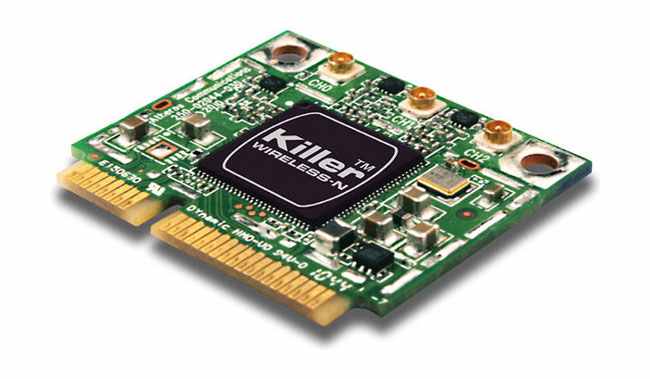Everyone knows that cheap laptops come with inexpensive Wi-Fi modules. Manufacturers need to use cheap components if they want to release a best seller, and skimping on Wi-Fi is ideal, because the effect isn’t immediately visible.
A cheap display or a wobbly keyboard are much harder to hide, so the “clever” laptop makers tend to keep the weak components hidden inside the laptop’s case. On the other hand, a fast CPU and a big hard drive are features that will easily attract buyers, especially if the price is low.

Some of the cheapest modules are soldered onto the motherboard, and this makes them extremely hard to replace. However, Wi-Fi modules are usually replaceable, and by doing this you will easily double the speed of your Internet connection for only 20…30 bucks.
Ultrabooks are great portables, there’s no doubt about it! Still, if your laptop falls into that category, it may mean that you are out of luck. Half inch thick laptops rarely have standalone Wi-Fi modules, even though it may happen from time to time. But don’t lose hope, we’ve got some solutions for you as well.
Let us assume that you have a standard laptop, and not an ultrabook. Begin your journey by downloading your laptop manual, in case that you don’t have it. Websites like these are of great help: http://www.tim.id.au/blog/tims-laptop-service-manuals/
Often times, your will discover several screws that allow you to open compartments which provide access to the memory slots, hard drive, Wi-Fi module, etc. Locate the Wi-Fi module, and then its antennas; regular modules have one or two antennas, even though you may find a Wi-Fi module with three antennas every now and then.

Disconnect the antennas, and then go shopping for a compatible Wi-Fi module. Insert the module into its socket, and then reconnect the antennas. If all goes well, you’ve just upgraded your wireless Internet connection. Not only that, but by replacing the Wi-Fi module you may also get access to new features like faster Bluetooth connections, access to Intel’s WiDi technology, which allows your laptop to connect to a TV wirelessly, and so on.
But what about the poor folks who haven’t got the option of replacing the internal Wi-Fi modules? Fear not, for there are several solutions that can fix the problem for good:
- Upgrade your router. Install the latest and greatest router firmware update or, if you have an old router model, get rid of it and purchase a new one. Your laptop will thank you!
- Use a repeater. Don’t worry, this is just a fancy name for a device that strengthens your Wi-Fi signal, picking it up and rebroadcasting it. If your laptop is placed in an area with poor Wi-Fi signal, a repeater will work wonders.
- Replace your router antenna. Use a good antenna and a good RP SMA cable – don’t buy cheap stuff, because you’re going to waste your money without seeing any improvements. Omnidirectional antennas are able to broadcast Wi-Fi signal in all directions.
- Use an external Wi-Fi adapter. Trust me, this is one of the smartest things you can do if you can’t replace the internal Wi-Fi module. Make sure to buy a good quality module (Intel’s chips are very good), plug it into an USB port, let it install the needed drivers, and voila – you have significantly upgraded your Wi-Fi.
- Adjust your router’s power. Did you know that many routers allow you to set their broadcasting power? Often times, their default settings are OK, but it’s well worth it to verify this setting. Boost the power and all the Internet ready devices in your home will receive a stronger Wi-Fi signal.
Armed with this info, the only thing that stands between you and a nice Wi-Fi boost is… you! Pick the best method that works for your laptop, apply it, and you will be ready to reap the true benefits that arise from having a broadband Internet connection.

 Web portals are usually classified in horizontal and vertical portals. The horizontal portal is a kind of a platform for companies that activate in the same sector, while the vertical portal represents the entry point to a certain interest, to a certain industry segment. Some of the vertical portals offer news, digital magazines, e-commerce, etc, to give you an example.
Web portals are usually classified in horizontal and vertical portals. The horizontal portal is a kind of a platform for companies that activate in the same sector, while the vertical portal represents the entry point to a certain interest, to a certain industry segment. Some of the vertical portals offer news, digital magazines, e-commerce, etc, to give you an example.